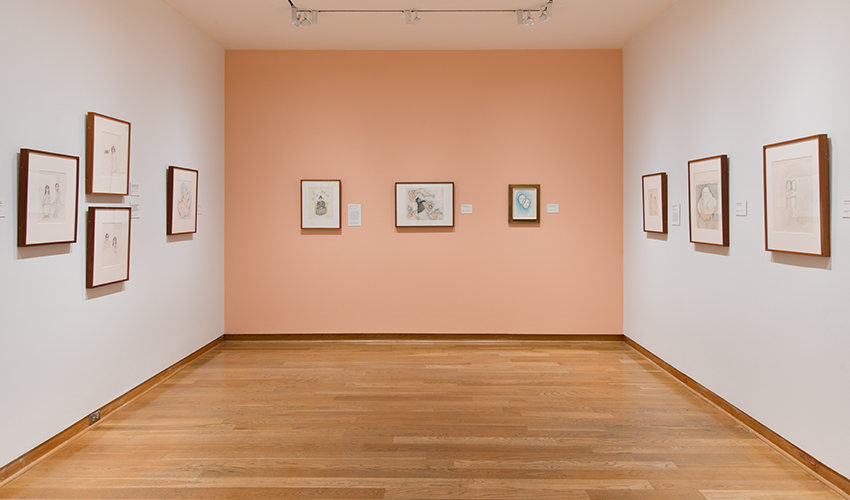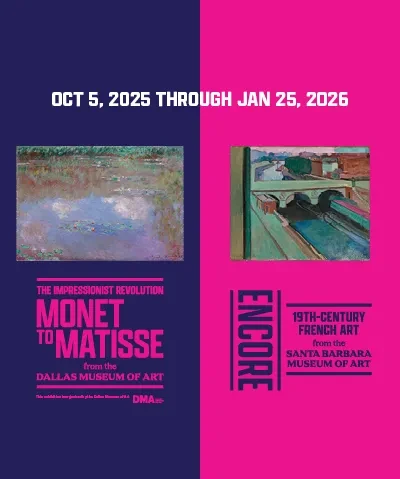Living in the Timeless: Drawings by Beatrice Wood
Recognized for her vibrant lusterware pottery, Beatrice Wood (1893-1998) first emerged as an artist in 1917, making sketches as part of the provocative New York Dada scene. This exhibition examines the lesser known yet foundational role of drawing in the artist’s work, which she continued to develop over the next eight decades. Wood’s drawings served as visual diaries, allowing her to explore personal and often socially taboo subject matter in abstract and figurative styles. Providing an intimate glimpse into the artist’s life and legacy, Living in the Timeless also celebrates the recent gift of 166 works on paper by Wood from the collection of Francis M. Naumann and Marie T. Keller to the Santa Barbara Museum of Art. Largely autobiographical and frequently revisiting past characters and forms, Wood’s drawings allowed her “to live in the timeless,” as she wrote to a friend at the age of 103.
Infused with humor, wit, and sexuality, Wood’s drawings delve into various aspects of human nature. In addition to works on paper, the exhibition also features selected figurative ceramic sculptures and tiles, as well as the artist’s illustrated books—all extensions of her draftsmanship. The idiosyncratic subjects of her drawings gave form to her exploits in these new mediums. Her figurative sculptures, described by the artist as “sophisticated primitives” often represent complex, adult themes in a deliberately naïve manner—mirroring a coquettish personality that Wood crafted and sustained throughout her life.





















![memberseve[1]](https://www.sbma.net/sites/default/files/styles/menu_thumbnail_400_480/public/menu/memberseve%5B1%5D.jpg.webp?itok=hIz01lpc)





